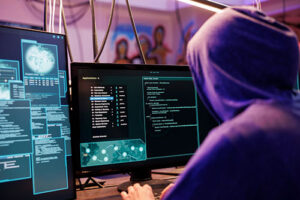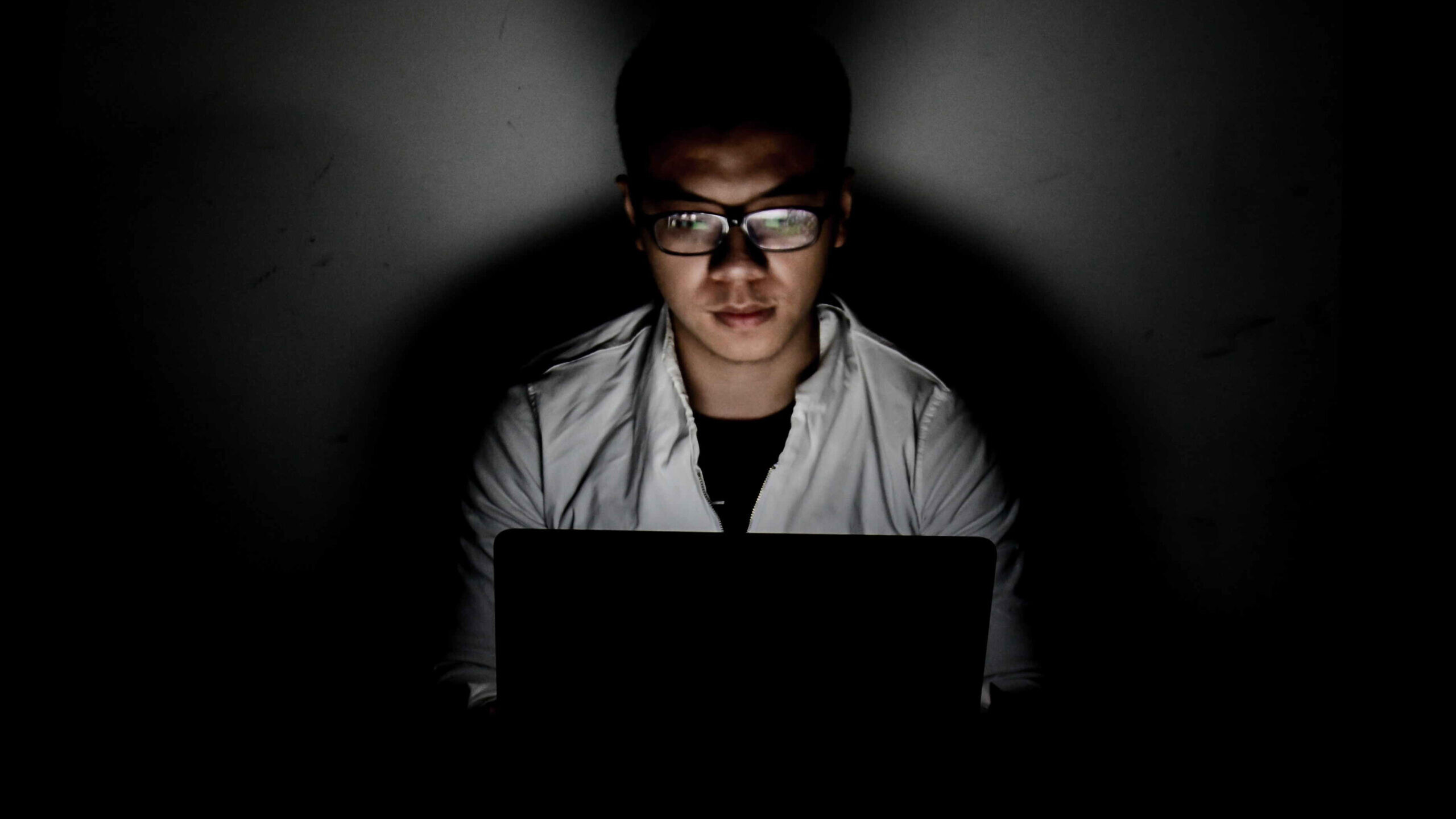6 ways students cheat online assessments, and how to stop them
About 1,500 years ago, scores of Chinese citizens sat down in examination cells with brush and ink to start their civil service tests – one of the first written exams.1
 Throughout their history, the tests were marred by foul play. Bribes, help from examiners, and even “cheat socks”2 were used to pass them.3
Throughout their history, the tests were marred by foul play. Bribes, help from examiners, and even “cheat socks”2 were used to pass them.3
Today, many students take tests on computers. While cheat socks might remain an effective tactic, there’s more to worry about: AI, messaging apps, YouTube, and other methods students use to avoid honest hard work.
Academic integrity is crucial for companies that run online assessments, so this is a big concern. But just as students think of various creative ways to cheat their high-stakes tests, creators of modern exam technology are keeping up in the “arms race” by creating ironclad solutions for each of them.
Online exam cheating was self-reported by 44.7% of surveyed students.5
Journal of Academic Ethics
In this article, we explore both angles: the most common ways students cheat during online assessments, and the smart ways they’re mitigated through current exam tech – namely remote proctoring software. We mostly cover online exams taken at home and monitored through remote proctoring software, but many of the principles also apply to human-invigilated online tests hosted at exam venues.
Let’s get to it: these are the most common cheating methods used for online assessments.
Method 1: Using proxy test-takers for online assessments
It’s believed Saddam Hussein may have had up to 10 body doubles – political decoys he used to avoid danger, some exceptionally convincing. If the dictator were alive today and impelled to take an online assessment, he may be tempted to use one of those stand-ins – a common form of cheating called proxy test-taking.
Given the temptation to take academic short-cuts, proxy test-taking has become an industry all by itself. You’ll find these services plastered on websites, social media pages, campus bars – anywhere an interested student cares to look. The Varsity Blues case in America is a famous example, where students’ families paid large sums of money for proxies to take admission tests for prestigious U.S. colleges.
The proxy test-taking problem
1 in 200 exams may be attempted by a proxy test-taker9
8% of U.S. colleges reported cases of proxy test-taking8
Test-takers can charge thousands of dollars10
When COVID steamrolled the world in 2020, and online exams became a necessity for many organisations and institutions, proxy test-taking rose alongside it. With no invigilators to keep them honest, students suddenly had a viable way to pass their high-stakes tests: just hire someone who knows the material.
Proxy test-taking demanded an urgent solution, and remote proctoring software – not well known up until this point – provided the answer.
Before students start their tests, the software guides them through a stringent identity verification process, using their webcam to scan their eye positioning and shape, nose width, jawline contours and other defining facial features. Then it scans a credible identification document – a passport, driver’s license – and compares the two. If the two scans reach a certain similarity percentage, it concludes that the person taking the test is genuine and allows them to start. In addition, a worthwhile system continues to scan the student’s face throughout the exam to catch any quick switches.
With no invigilators to monitor online assessments, students suddenly had a viable way to pass their high-stakes tests: just hire someone who knows the material.
How might Saddam fare in a modern remotely-proctored test? Would one of his doubles get past the facial recognition software? It’s unlikely. The best facial identification algorithms have an error rate of just 0.08 per cent7, and some remote proctoring tools also use knuckle scanning – an area with unique biometric identifiers – to strengthen the identification. So unless the impersonator also has similar knuckle patterns, the Iraqi dictator would have to take the test himself.
Method 2: AI and search engines
 The internet is a truly wonderful thing – a global network of a billion plus websites4 teeming with useful information, much of which can be mined for answering assessment questions. Throw generative AI into the mix and you have a supercharged threat to academic integrity.
The internet is a truly wonderful thing – a global network of a billion plus websites4 teeming with useful information, much of which can be mined for answering assessment questions. Throw generative AI into the mix and you have a supercharged threat to academic integrity.
Thankfully, this form of cheating can be easily offset through lockdown software that restricts students’ access to certain websites or apps. The lockdown features are typically included in the online assessment tech itself – either as a downloadable application or a browser add-on – which the student must download to complete their test.
Once downloaded, search engines like Google, Bing and Yahoo are inaccessible, as are other applications that might be used for cheating – ChatGPT or Microsoft Word, for example. Or to be extra safe, the software might impose a blanket ban on any other application aside from the online exam itself.
Using AI and search engines to cheat is easily offset through lockdown software that restricts students’ access to them.
What’s stopping a student from slyly pulling out their phone and Googling something? This is where digital cameras and AI-powered remote proctoring technology come in. AI is now adept at identifying common objects, which includes the size, shape, colour and defining features of a mobile phone. As it records the test session through a webcam, it continuously monitors for forbidden objects like mobile phones. If a phone is detected it timestamps the video recording and flags it for a human to check. Or more likely, if the student uses a phone underneath their desk, the software monitors for suspicious hand and eye movements.
While the AI can be highly skilled at detecting and flagging these kinds of behaviours, as with human proctors, it’s by no means perfect. Depending on the sensitivity of the monitoring, a student might be completing their test with impeccable honour but be incorrectly tagged with infractions (which they don’t see). That’s why a “human-in-the-loop” approach is crucial for high-stakes online assessments, where proctors can quickly review the recorded video to check the validity of each violation.
What are the biggest problems with online exams?
Online exams can save vast amounts of time and money, but they come with certain flaws.
Method 3: Using notes during online assessments
 Notes are the classic cheating method, and their potency is matched by their creativity. Test students can write them on their hand, on water bottles, tissues, band aids; they can pin them to a wall, hide them in a toilet, have a friend hold them up; display them brightly on their phones, tablets, smartwatches, e-readers… if dishonest students used the same level of energy for studying, they needn’t go to the trouble.
Notes are the classic cheating method, and their potency is matched by their creativity. Test students can write them on their hand, on water bottles, tissues, band aids; they can pin them to a wall, hide them in a toilet, have a friend hold them up; display them brightly on their phones, tablets, smartwatches, e-readers… if dishonest students used the same level of energy for studying, they needn’t go to the trouble.
Online assessment software usually prohibits notes in a couple of ways. Digital notes that a student might discretely hide behind the test window are blocked by the same lockdown software that prevents access to websites. But in this case, the lockdown software blocks apps that include the written word – the Microsoft Office suite, for example. But it’s more likely to impose a blanket ban on any app to ensure full coverage.
The second defensive method deals with traditional ink-based notes outside of the test device – those discretely stuck to the student’s monitor, written on their socks, etc. Remote proctoring software typically picks these up by completing a room scan using two cameras: the webcam on (or inside) the student’s screen, and a mobile phone or tablet placed to the side to scan the screen and keyboard area.
4 ways students use notes during online exams
A second monitor
Sticky notes on screen
Audio recordings
Notes on the wall
Using these two cameras, the AI system should detect anything that looks remotely like cheat notes, including everyday items that might have notes written on them (depending on how sensitive you want the system to be). If the student places their notes in a blind spot, say pinned to a wall behind their desk, the AI should detect them regularly looking towards the notes during the online exam.
Remote proctoring software usually picks up notes by completing a room scan using two cameras: the webcam in the student’s screen, and a mobile phone or tablet placed to the side of the student to scan the monitor and keyboard area.
As for other common technologies like mobile phones and smartwatches, which are more than capable of displaying cheat notes, the AI should also pick up their usage by checking for irregular hand, head and eye movements.
Method 4: Messaging apps
 Around 3.5 billion people use mobile messaging apps to talk to each other.6 For many, they’ve become the chief way to communicate with friends and family, which makes them a popular method for getting a little help during important online assessments.
Around 3.5 billion people use mobile messaging apps to talk to each other.6 For many, they’ve become the chief way to communicate with friends and family, which makes them a popular method for getting a little help during important online assessments.
Messaging apps are usually accessed on students’ phones, so are easily detected by AI monitoring software – including those hidden underneath desks (the downward shifting eyes and tapping fingers tend to be a dead giveaway). And students can’t access the messaging apps on the computer itself because the lockdown software typically imposes a hard ban, temporarily confining the student to the test and nothing else.
Messaging apps are usually on students’ phones, so are easily detected by AI monitoring software – including those hidden underneath desks.
The same goes for messaging apps stored on laptops or other external devices, which may be positioned out of sight. If students reach for or frequently look towards them, a well-designed AI system will catch the violations and mark them for human review.
Method 5: Faking internet issues during online assessments
For an online assessment to appear on a student’s computer, thousands of data packets must rocket through the air via Wi-Fi radio waves. The process is as finnicky as it is magical, which is why many internet dropouts occur.
For students with cheating on their minds, a dropout may not feel maddening but fortuitous: a precious slot of time when the proctoring software is “blind” and nearby notes can be devoured before it regains its sight. Some students might even take the next logical step and repeatedly sabotage the internet connection so they can cheat till their heart’s content.
4 ways students can sabotage their Wi-Fi connection during an online test
Place the router in a low-signal spot
Have a friend disconnect the router
Ask a friend to overload the network
Ask a friend to cut the house’s power
For a high-stakes online exam to preserve academic integrity, where it might only take a few seconds for a student to get an unethical upper-hand, the remote proctoring software must be able to continue monitoring and recording during internet dropouts. That way, every potential infraction is recorded and timestamped for human review, and the test results remain reliable and fair.
What about broader issues with the computer itself? If a student’s computer freezes or crashes mid-way through a test (with progress saved), the remote proctoring software can obviously no longer do its job, and your organisation’s policies should determine what happens next. Should they be allowed a certain amount of time to log back in and continue? How many times might this happen before it becomes suspicious, and what happens then? Is it fair that they’ve already read and possibly remembered their last question, giving them more time to think about and answer it? This is a complex area with many facets, each of which should be considered and outlined in your policies.
For a high-stakes online exam to have academic integrity, where it might only take a few seconds for a student to get an unethical upper-hand, the remote proctoring software must be able to continue monitoring and recording during internet dropouts.
Method 6: Virtual machines
 A virtual machine is a piece of software that creates a separate operating system within a computer. It’s basically a way to run two instances of Windows (or macOS) on the same machine.
A virtual machine is a piece of software that creates a separate operating system within a computer. It’s basically a way to run two instances of Windows (or macOS) on the same machine.
That means a student can take their online assessment on one Windows instance, where everything they do is fair and legitimate, and on the other instance they can display notes, chat to friends, browse the internet…anything to better answer their test questions. Or they might give remote access to a friend who is better equipped to complete the test.
Because the other Windows instance is technically a separate operating system, this cheating technique used to be difficult to trace. But modern remote proctoring programs now complete sweeping scans of students’ machines, looking for certain applications, network configurations, and other signs of virtualisation. Once detected, the assessment organiser is notified, and the appropriate discipline can be served.
Modern remote proctoring programs complete sweeping scans of students’ machines, looking for certain applications, network configurations, and other signs of virtual machines.
Summing up
Cheating remains a frustratingly common deed for high stakes assessments, and will endure alongside human nature. And for online exams, which many organisations are turning to due to their scalability and cost savings, cheating can feel like an even bigger risk.
Thankfully, we have the defences to guard against it. When combined with systematic human reviews, modern remote proctoring software has the smarts to counter the most widespread forms of cheating, allowing organisations to run online assessments with academic integrity.
References
- Imperial examination, Wikipedia
- 2020, Imperial examination cheat socks, Museum Fatigue
- Sun Jiahui, 2021, Famous Cheating Scandals from Chinese History, The World of Chinese
- Sophie Venz, Johanna Leggatt, 2024, Top Website Statistics for 2024, Forbes
- Philip M. Newton, Keioni Essex, 2023, How Common is Cheating in Online Exams and did it Increase During the COVID-19 Pandemic? A Systematic Review, Journal of Academic Ethics
- 2024, Number of mobile phone messaging app users worldwide from 2019 to 2025, Statista
- William Crumpler, 2020, How Accurate are Facial Recognition Systems – and Why Does It Matter? CSIS
- National Association for College Admission Counseling, NACAC
- David Foster, 2024, What Are Proxy Test Takers, Caveon
- Emily Matzelle, 2022, What Is Proxy Testing and Why It Sets You Up for Failure, CompTIA
About the author
Janison
Unlocking the potential in every learner
You might also like
Want to learn more about our tailored solutions?
Chat to one of our assessment or learning consultants today.
or call us on 1300 857 687 (Australia) or +61 2 6652 9850 (International)



